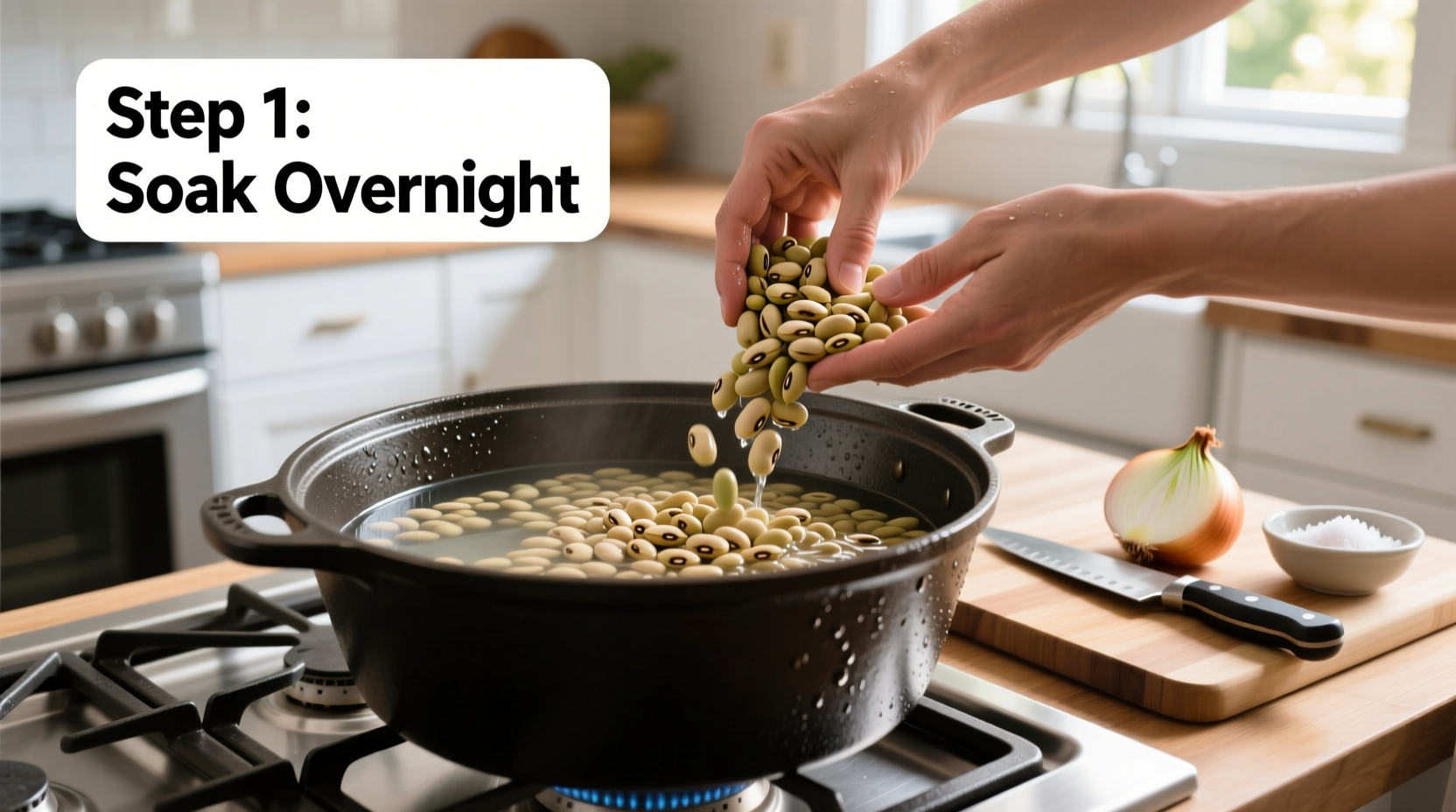Properly cooked dry lima beans require 8-12 hours of soaking followed by 45-90 minutes of boiling in fresh water. Never skip soaking or use the soaking water for cooking, as this eliminates harmful compounds naturally present in raw beans. The final texture should be creamy yet firm, not mushy. Always discard soaking water to remove oligosaccharides that cause digestive discomfort.
Antonio Rodriguez brings his decade of professional kitchen experience to this definitive guide on preparing dry lima beans. As someone who's cooked everything from Michelin-starred dishes to humble comfort food, I understand how proper bean preparation transforms both flavor and texture. Many home cooks struggle with lima beans because they skip critical steps or misunderstand the science behind proper preparation.
Why Proper Lima Bean Preparation Matters
Lima beans contain cyanogenic glycosides, natural compounds that can be harmful when consumed raw. The U.S. Food and Drug Administration confirms that proper soaking and cooking eliminates these compounds while preserving nutritional value. Skipping these steps results in beans that are either unsafe to eat or unpleasantly textured.
Your Complete Lima Bean Preparation Timeline
Follow this professional chef-tested timeline for perfect results every time. This structured approach addresses both safety concerns and culinary quality:
| Preparation Stage | Time Required | Critical Success Factors |
|---|---|---|
| Sorting & Rinsing | 5 minutes | Remove debris and damaged beans |
| Traditional Soaking | 8-12 hours | Cover beans with 3x water volume |
| Quick Soak Method | 1.5 hours | Boil 2 minutes, then steep covered |
| Cooking Time | 45-90 minutes | Maintain gentle simmer, not rolling boil |
Step-by-Step Cooking Instructions
Phase 1: Sorting and Initial Preparation
Spread dry lima beans on a clean surface and remove any small stones, debris, or discolored beans. Rinse thoroughly under cold water in a colander, rubbing gently to remove dust. This preliminary step prevents unexpected texture issues in your final dish.
Phase 2: The Critical Soaking Process
Place cleaned beans in a large bowl and cover with 3 inches of cold water. For traditional soaking, let sit at room temperature for 8-12 hours. For the quick soak method:
- Bring beans and water to a rapid boil for exactly 2 minutes
- Remove from heat, cover, and let steep for 1 hour
- Drain and rinse before cooking
The National Center for Home Food Preservation emphasizes that discarding soaking water removes oligosaccharides responsible for digestive discomfort. Never cook beans in their soaking liquid.

Phase 3: Cooking for Optimal Texture and Safety
Place soaked beans in a large pot and cover with fresh water (3 cups water per 1 cup beans). Bring to a gentle simmer—never a rolling boil, which damages bean structure. Cook uncovered for 45-90 minutes until tender but not mushy.
Add salt only during the last 15 minutes of cooking. Early salting can toughen bean skins. For enhanced flavor, consider adding aromatics like bay leaves or garlic during the final 30 minutes.
Safety Considerations You Can't Ignore
Raw lima beans contain linamarin, which breaks down into cyanide during digestion. The USDA Agricultural Research Service confirms that proper cooking reduces these compounds to safe levels. Never cook lima beans in a slow cooker on low setting, as insufficient heat may actually increase toxin levels.
Flavor Enhancement Techniques from Professional Kitchens
While basic cooking ensures safety and texture, these chef-approved techniques elevate your lima beans:
- Add a strip of kombu seaweed during cooking for improved digestibility
- Finish with a splash of acid (lemon juice or vinegar) to brighten flavors
- Stir in 1 tablespoon of good olive oil after cooking for silky texture
- For creamier results, reserve and blend 1/4 of cooked beans before mixing back in
Troubleshooting Common Lima Bean Problems
Problem: Beans remain hard after cooking
Solution: Older beans require longer cooking. Check water level frequently and add more boiling water as needed.
Problem: Beans become mushy
Solution: You likely boiled too vigorously. Maintain a gentle simmer and add salt late in the process.
Problem: Beans cause digestive discomfort
Solution: You didn't discard the soaking water. Always use fresh water for cooking and consider adding epazote or kombu.
Storing and Reusing Leftover Lima Beans
Cool cooked beans quickly and store in their cooking liquid in airtight containers. Properly stored, they'll keep for 5 days in the refrigerator or up to 6 months frozen. Never discard cooking liquid—it's flavorful and nutrient-rich, perfect for soups and stews.











 浙公网安备
33010002000092号
浙公网安备
33010002000092号 浙B2-20120091-4
浙B2-20120091-4